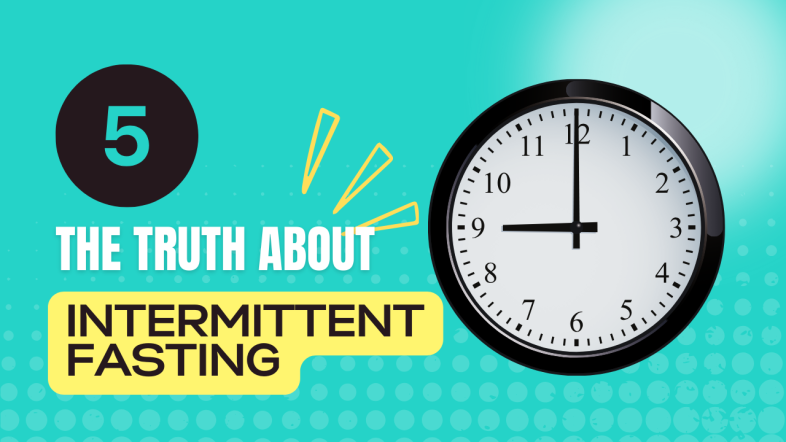When it comes to weight loss, the concept of fasting can be a bit daunting for many. With so many different methods and approaches out there, it’s easy to get confused about what fasting really entails. In this article, we aim to explore the truth about fasting, particularly delving into the various methods that can aid in weight loss. From differentiating between long-term and short-term fasting to understanding the ins and outs of intermittent fasting, we’ll break down the key components of each method. Join us as we uncover the facts about fasting and arm you with the knowledge to choose the best approach for your weight loss journey.
Introduction: Understanding Different Types of Fasting
In the world of weight loss and health trends, fasting has become a popular topic of discussion. However, with the rise in popularity, there has also been a surge in confusion surrounding the different types of fasting and their respective benefits. It’s important to recognize that not all fasting is the same, and each type of fasting comes with its own set of rules and guidelines. In this article, we will delve into the world of fasting, starting with the concept of intermittent fasting and intermittent feeding.
Discussing the Confusion Surrounding Different Types of Fasting
One of the main reasons for the confusion surrounding fasting is the lack of clear definitions and distinctions between the various approaches. Many people lump all forms of fasting together without truly understanding the differences between them. This can lead to misinformation and misunderstandings about the potential benefits and drawbacks of each type of fasting.
Introducing the Concept of Intermittent Fasting and Intermittent Feeding
Intermittent fasting has gained popularity in recent years as a convenient and effective way to manage weight and improve overall health. This approach involves alternating periods of eating and fasting within a specified time frame. On the other hand, intermittent feeding focuses on the timing of meals rather than the frequency of eating. By understanding the distinctions between these two concepts, individuals can make informed decisions about which approach may work best for their goals.
Stay tuned as we delve deeper into the differences between long-term fasting and short-term fasting, gaining a clearer understanding of intermittent fasting, and exploring various approaches to fasting for weight loss. Let’s debunk the myths and set the record straight on all things fasting. # Differentiating Long-term Fasting and Short-term Fasting
When it comes to fasting for weight loss or health reasons, there seems to be a lot of confusion surrounding the various types of fasting practices. It’s essential to understand that not all fasting is the same, and differentiating between long-term fasting and short-term fasting can make a significant impact on your overall fasting experience and results.
Defining Long-term Fasting
Long-term fasting is characterized by an extended period of abstinence from food or calorie intake. Typically, long-term fasting involves refraining from eating for over 72 hours. During this fasting period, the body goes through various metabolic changes, including entering a state of ketosis, where it burns fat for energy instead of glucose.
Defining Short-term Fasting
In contrast, short-term fasting involves a shorter period of abstinence from food or calorie intake, typically 72 hours or under. Short-term fasting can still provide health benefits and promote weight loss, but the metabolic changes that occur may not be as profound as with long-term fasting.
Key Differences Between Long-term and Short-term Fasting
- Long-term fasting requires a more extended period of food restriction, leading to more significant metabolic changes than short-term fasting.
- Short-term fasting may be more manageable for individuals who are new to fasting or who have specific health concerns that make extended fasting periods challenging.
- Both long-term and short-term fasting can be effective for weight loss, but they should be approached differently based on individual goals and health considerations.
Ultimately, the decision to engage in long-term or short-term fasting should be based on personal preferences, health goals, and individual circumstances. It’s essential to consult with a healthcare provider or nutrition professional before embarking on any fasting protocol to ensure it is safe and appropriate for you.
Stay tuned for the next section, where we delve into the concept of intermittent fasting and how it differs from intermittent feeding. # Understanding Intermittent Fasting
Intermittent fasting has gained popularity in recent years as a method for weight loss and overall health improvement. However, there is often confusion surrounding what intermittent fasting truly entails and how it differs from intermittent feeding. In this section, we will delve into the intricacies of intermittent fasting to provide clarity and understanding.
Definition of Intermittent Fasting
Intermittent fasting can be defined as the practice of occasionally taking a break from eating. This means establishing specific windows of time where food consumption is limited or eliminated, followed by periods of normal eating. It is not about restricting calories or certain food groups but rather about timing when you eat.
Differentiation Between Intermittent Fasting and Intermittent Feeding
One common misconception is the conflation of intermittent fasting with intermittent feeding. Intermittent feeding refers to the practice of eating at specific intervals throughout the day, whereas intermittent fasting involves extended periods of not consuming any calories. Understanding this distinction is crucial to properly implementing intermittent fasting for weight loss and health benefits.
Key Differences Between Intermittent Fasting and Intermittent Feeding
- Frequency of Eating: Intermittent fasting involves longer periods of not eating, usually ranging from 16 to 24 hours, while intermittent feeding focuses on multiple small meals throughout the day.
- Impact on Insulin Levels: Intermittent fasting can lead to improved insulin sensitivity and lower blood sugar levels compared to intermittent feeding, which may cause more frequent spikes in insulin.
- Metabolic Effects: Intermittent fasting has been shown to promote fat loss and lean muscle mass retention, whereas intermittent feeding may not produce the same metabolic benefits.
FAQs about Intermittent Fasting
Is intermittent fasting safe for everyone?
- Intermittent fasting can be safe for most individuals, but it is essential to consult with a healthcare professional before starting any fasting regimen, especially if you have underlying health conditions.
What are the potential benefits of intermittent fasting?
- Some potential benefits of intermittent fasting include weight loss, improved metabolic health, enhanced brain function, and increased longevity.
Can I exercise during intermittent fasting?
- It is possible to exercise during intermittent fasting, but it is recommended to adjust the timing of workouts to coincide with feeding periods to optimize performance and recovery.
Key Take-Aways
- Understanding the distinction between intermittent fasting and intermittent feeding is crucial for successful implementation.
- Intermittent fasting involves periodic breaks from eating to promote metabolic benefits and weight loss.
- Consult with a healthcare professional before starting any fasting regimen to ensure safety and effectiveness.
In the next section, we will explore different approaches to fasting for weight loss, including popular methods like LeanGains and The Renegade Diet. Stay tuned for valuable insights on finding the fasting approach that suits your goals and lifestyle. ## Exploring Different Approaches to Fasting for Weight Loss
Fasting has become a popular method for weight loss in recent years, with many different approaches gaining attention. From LeanGains to The Renegade Diet, individuals have a variety of options when it comes to incorporating fasting into their weight loss journey. In this section, we will explore the different approaches to fasting for weight loss, highlighting the benefits and drawbacks of each method.
LeanGains
LeanGains is a popular fasting method that involves a daily eating window combined with calorie cycling. This approach typically involves fasting for 16 hours a day and eating within an 8-hour window. During the fasting period, individuals are encouraged to consume only water, black coffee, or other non-caloric beverages. The main goal of LeanGains is to optimize fat loss while preserving muscle mass.
Benefits:
- Helps control calorie intake
- Can lead to fat loss while preserving muscle mass
- Simplifies meal planning
Drawbacks:
- May be challenging for those new to fasting
- Requires discipline to stick to the eating window
- Some individuals may struggle with hunger during the fasting period
The Renegade Diet
The Renegade Diet is another approach to fasting for weight loss that focuses on nutrient timing and food combinations. This method involves fasting for 16 hours a day and consuming all meals within an 8-hour window. The Renegade Diet also emphasizes the importance of eating nutrient-dense foods and avoiding processed ingredients.
Benefits:
- Encourages healthy food choices
- Helps regulate blood sugar levels
- Can lead to weight loss and improved energy levels
Drawbacks:
- Requires careful planning of meals
- May be restrictive for some individuals
- Difficult to sustain long-term for some people
Extreme Fasting Protocols
Some individuals may opt for extreme fasting protocols in an effort to achieve rapid weight loss. These protocols may involve prolonged fasting periods, such as fasting for 24-48 hours at a time. While extreme fasting can lead to quick results, it is important to approach these methods with caution and under the supervision of a healthcare professional.
Benefits:
- Can result in rapid weight loss
- May kickstart the body’s fat-burning processes
- Can help break through weight loss plateaus
Drawbacks:
- Potential for nutrient deficiencies
- Can be physically and mentally demanding
- Not sustainable for long-term weight maintenance
Clarifying Personal Experiences with Fasting Methods
When exploring different approaches to fasting for weight loss, it is crucial to consider individual preferences and experiences. What works well for one person may not be suitable for another. It is essential to listen to your body, track your progress, and adjust your fasting approach as needed.
In the next section, we will delve deeper into the benefits of intermittent fasting and provide tips for incorporating this fasting method into your weight loss journey. Stay tuned for expert advice and practical strategies for successful weight loss through intermittent fasting. ## Conclusion
When it comes to fasting for weight loss, it’s essential to understand that not all fasting approaches are the same. With the rise in popularity of intermittent fasting, it’s crucial to differentiate between various fasting styles and find what works best for you.
Key Takeaways:
- Challenge the traditional definitions of intermittent fasting and explore multiple forms of fasting.
- Experiment with different fasting approaches such as LeanGains, The Renegade Diet, or extreme fasting protocols to find the most suitable method for you.
- Remember to clarify your personal experiences with fasting methods to ensure success in your weight loss journey.
In conclusion, the key to successful fasting for weight loss lies in finding the approach that aligns with your goals and lifestyle. By recognizing the differences between intermittent fasting and intermittent feeding, you can make informed decisions about your fasting routine.
| Eat Stop Eat — The original “2 day diet.” Learn why dieting every day will ruin your fat loss. And how a simple nutritional strategy with only ONE rule is the key to rapid fat loss and lifelong weight management. Click here to get more details |  |
Stay tuned for our upcoming articles where we dive deeper into the benefits of specific fasting methods and how to maximize results through proper nutrition and exercise.
In conclusion, fasting can be a powerful tool for weight loss when done correctly and with guidance from a healthcare professional. From intermittent fasting to extended fasts, there are many different methods to choose from. It is important to find a method that works best for you and aligns with your lifestyle and health goals. Remember, sustainable weight loss takes time and consistency, so be patient with yourself as you embark on your fasting journey. With dedication and a balanced approach, you can achieve your weight loss goals and improve your overall health.


